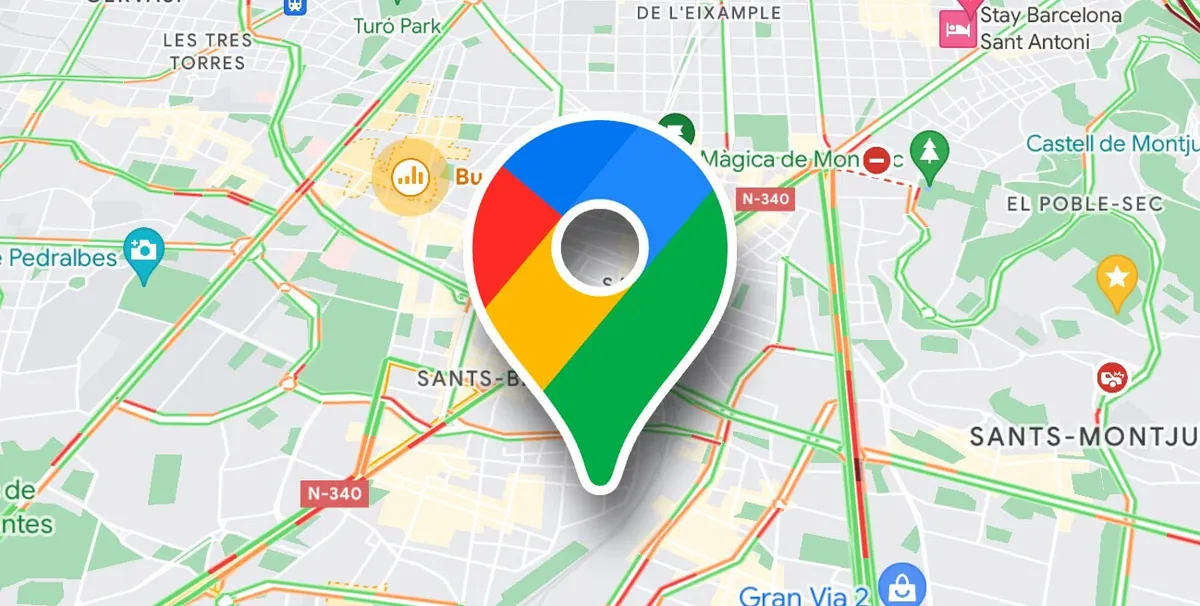
Google Maps has become an integral part of our daily lives, revolutionizing the way we navigate the world around us. From providing turn-by-turn directions to helping us explore new places, Google Maps has evolved into a powerful tool that offers much more than just maps and directions. In this article, we will delve into 19 fascinating facts about Google Maps that showcase its impact, innovation, and the remarkable technology behind it. Whether you're a frequent user or simply curious about the inner workings of this ubiquitous platform, these facts are bound to pique your interest and deepen your appreciation for the digital cartography giant. Join us as we unravel the captivating world of Google Maps and uncover the intriguing details that make it an indispensable companion for millions of people worldwide.
Key Takeaways:
- Google Maps, launched in 2005, offers real-time traffic updates, Street View, and offline maps, revolutionizing navigation and exploration with advanced technology and user-friendly features.
- With Google Maps, users can contribute, share their location, access accessibility features, and explore local businesses, showcasing its diverse capabilities and commitment to inclusivity and community engagement.
Google Maps was launched in 2005.
Google Maps revolutionized navigation and location-based services when it was introduced in This innovative mapping platform provided users with a powerful tool for exploring the world and finding their way with ease.
The technology behind Google Maps is based on a combination of satellite imagery, aerial photography, and GIS data.
Google Maps harnesses the power of satellite imagery, aerial photography, and Geographic Information System (GIS) data to deliver accurate and detailed maps to users worldwide. This advanced technology enables users to visualize and navigate through locations with remarkable precision.
Google Maps offers real-time traffic updates.
One of the most valuable features of Google Maps is its real-time traffic updates, which provide users with critical information about traffic conditions, allowing for efficient route planning and navigation.
Street View, a feature of Google Maps, provides panoramic views of locations at street level.
With Street View, users can explore and navigate through cities and neighborhoods as if they were physically present, offering a unique and immersive way to experience different places around the world.
Google Maps allows users to contribute to the mapping platform through user-generated content.
Users can actively contribute to Google Maps by adding reviews, photos, and other relevant information, making it a collaborative and dynamic platform that benefits from the collective knowledge of its users.
Google Maps provides public transit information for cities around the world.
By offering public transit information, Google Maps enables users to plan their journeys using buses, trains, and other forms of public transportation, enhancing the accessibility and convenience of the platform.
The Google Maps mobile app allows users to download maps for offline use.
With the offline maps feature, users can download maps of specific areas and access them without an internet connection, ensuring reliable navigation even in areas with limited connectivity.
Google Maps offers 3D maps and indoor maps for select locations.
The platform's 3D and indoor maps provide users with a more immersive and detailed view of certain locations, enhancing the overall mapping experience.
Google Maps incorporates machine learning and AI for various features, such as predicting traffic patterns and estimating travel time.
The integration of machine learning and artificial intelligence within Google Maps enhances its capabilities, allowing for predictive traffic analysis and accurate estimations of travel time based on historical data and real-time conditions.
Google Maps has a dedicated API for developers to integrate mapping capabilities into their applications.
The Google Maps API empowers developers to incorporate mapping functionality into their own applications, fostering innovation and enabling the creation of diverse location-based services.
Google Maps has a "Timeline" feature that tracks users' location history.
The Timeline feature records and visualizes users' location history, providing insights into past travels and activities, while also offering a convenient way to recall visited places.
Google Maps allows users to share their real-time location with others.
By enabling real-time location sharing, Google Maps facilitates coordination and enhances safety by allowing users to share their whereabouts with friends and family.
The platform offers accessibility features for individuals with disabilities, including voice-guided navigation and detailed transit information.
Google Maps prioritizes inclusivity by providing accessibility features that cater to individuals with disabilities, ensuring that everyone can benefit from its navigation and mapping capabilities.
Google Maps provides business listings and reviews, empowering users to discover and engage with local businesses.
Through business listings and reviews, Google Maps serves as a valuable platform for users to explore and support local businesses, while also providing businesses with a platform to showcase their offerings.
Google Maps has integrated COVID-19 related features, such as displaying testing centers and vaccination sites.
In response to the global pandemic, Google Maps incorporated features to display essential COVID-19 information, including the locations of testing centers and vaccination sites, contributing to public health awareness and safety.
Google Maps has a "Your Contributions" section, where users can track their contributions to the platform.
The "Your Contributions" section allows users to monitor their contributions to Google Maps, fostering a sense of community and engagement among its user base.
Google Maps has a "Measure Distance" feature, enabling users to calculate distances between multiple points on the map.
The "Measure Distance" feature provides users with a practical tool for measuring distances between different locations, offering added utility for various navigation and planning needs.
Google Maps offers multilingual support, making the platform accessible to users worldwide.
With multilingual support, Google Maps caters to a diverse global audience, allowing users to interact with the platform in their preferred languages and enhancing its inclusivity.
Google Maps has a "Saved Places" feature, allowing users to bookmark and organize their favorite locations.
The "Saved Places" feature enables users to save and categorize their favorite places on Google Maps, providing a convenient way to maintain personalized collections of locations for future reference.
The "19 Google Maps Facts" showcase the remarkable evolution and diverse capabilities of Google Maps, illustrating its pivotal role in modern navigation, exploration, and location-based services. From its inception in 2005 to its integration of advanced technologies such as machine learning and AI, Google Maps continues to empower users with comprehensive mapping tools and real-time information. With features like Street View, real-time traffic updates, and accessibility enhancements, Google Maps remains a fundamental resource for individuals, businesses, and communities worldwide. As the platform continues to evolve, it continues to redefine the way people navigate, discover, and engage with the world around them.
Conclusion
In conclusion, Google Maps has revolutionized the way we navigate and explore the world around us. Its innovative features, such as Street View, real-time traffic updates, and personalized recommendations, have made it an indispensable tool for millions of users worldwide. The continuous evolution of Google Maps, driven by advanced technologies like AI and machine learning, ensures that it remains at the forefront of digital mapping solutions. As we look to the future, it's exciting to anticipate the further enhancements and expansions that will continue to make Google Maps an essential companion for travelers, commuters, and adventurers alike.
FAQs
Is Google Maps free to use?Yes, Google Maps is free to use for basic navigation, location searches, and exploring points of interest. However, there may be charges for advanced features such as location sharing and business services.
How accurate is Google Maps' real-time traffic information?Google Maps' real-time traffic information is highly accurate, utilizing data from various sources, including GPS signals, mobile phone data, and historical traffic patterns, to provide up-to-date and reliable traffic insights.
Google Maps has revolutionized navigation, but outdoor enthusiasts and modern men may crave more specialized tools. Hunters seeking the perfect GPS companion should explore our curated list of the 8 best hunting GPS devices, tailored to their unique needs in the wild. Smartphone users looking to streamline their daily lives will find inspiration in our roundup of the 9 essential apps every man needs, handpicked to boost productivity, health, and personal growth. Dive into these informative articles to discover powerful gadgets and digital allies that complement Google Maps' impressive features.
Was this page helpful?
Our commitment to delivering trustworthy and engaging content is at the heart of what we do. Each fact on our site is contributed by real users like you, bringing a wealth of diverse insights and information. To ensure the highest standards of accuracy and reliability, our dedicated editors meticulously review each submission. This process guarantees that the facts we share are not only fascinating but also credible. Trust in our commitment to quality and authenticity as you explore and learn with us.


